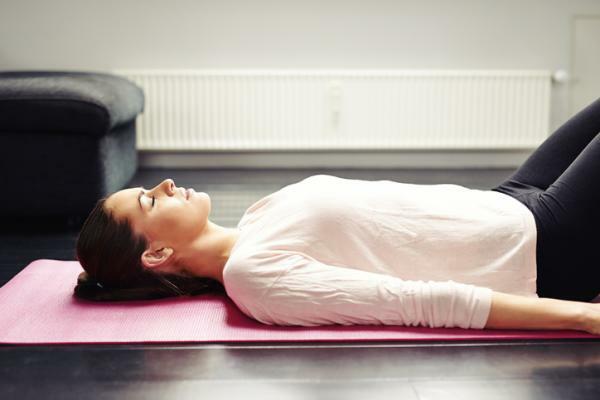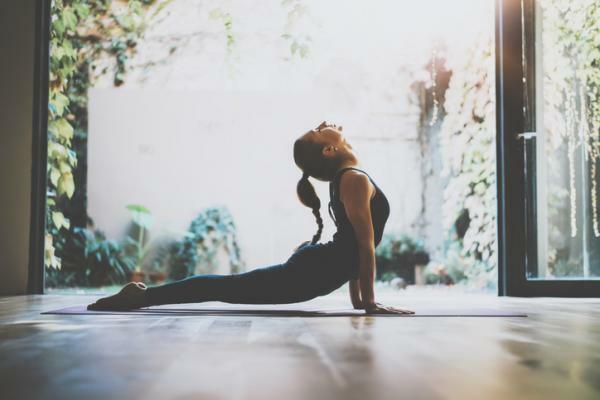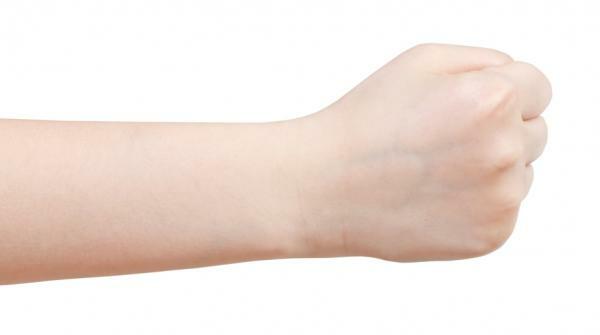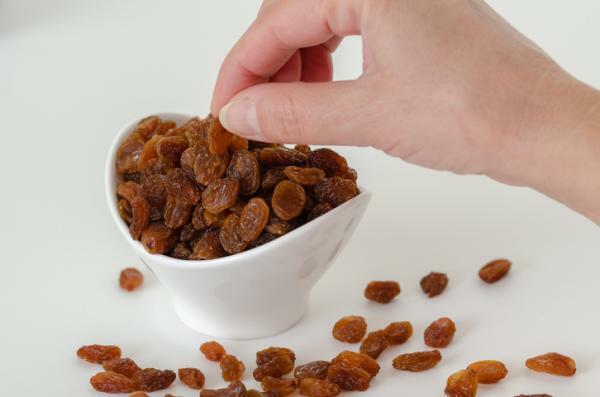
Stress is the response of our body when it perceives that we are overwhelmed by a certain situation, being an adaptive process of our body. However, high levels of stress can lead to serious organic illnesses and / or psychiatric disorders.
On many occasions when we are faced with high levels of stress, we feel incapable of doing what we should do and blocked from being able to control it. If you are wondering how to relieve stress and anxiety, relaxation or relaxation techniques can be of great help. Therefore, in this Psychology-Online article, we want to show you 9 relaxation techniques for stress.
Index
- What are relaxation techniques?
- Types of relaxation techniques
- Benefits of relaxation techniques
- Relaxation techniques for stress in psychology
- Jacobson's progressive muscle relaxation
- Autogenic training technique
- Diaphragmatic breathing
- Transcendental meditation
- Visualization techniques or guided imagery
- Mindfulness
- Body Scan
- Alternate breathing
- Yoga
What are relaxation techniques?
Relaxation techniques are a set of strategic, that regardless of the method used in them, aim to reduce high levels of activation of our autonomic nervous system, on muscular tension, in the presence of anxiety, in front of the alertness of our organism in general and other different psychological aspects, such as the stress.
To reduce these activation levels, relaxation techniques are based on exercises of a generally corporal and respiratory nature, in order to find muscular and nervous distention.
For this reason, relaxation techniques have become one of the most used psychological intervention strategies in practice, proving its effectiveness both to deal with psychological disorders, such as phobias, anxiety, training in social skills,... as well as a resource to deal with the most everyday problems.
Types of relaxation techniques.
There are numerous relaxation techniques, each beneficial, and your choice should be be established according to the technique that makes the person feel most comfortable and produces a greater effect. Among the different relaxation techniques we can find muscle relaxation, breathing techniques,... but in general all of them are divided into two types of relaxation:
- Active or physical techniques, which work from muscle to mind and they are aimed at reducing muscle tone. Muscle relaxation techniques emerged from Jacobson's progressive muscle relaxation.
- Passive or mental techniques, which work from mind to muscle, in order to have a greater command over mind control. In this case, relaxation techniques with this modality arose from Schultz's autogenous training technique.
Benefits of relaxation techniques.
Relaxation techniques can have great benefits in our physical, mental and emotional health. It should be noted that relaxation techniques they are easy to learn and considerably reduce our levels of tension and discomfort, therefore can be used at any time and place in stressful situations. In addition to its ease of application and its effectiveness in reducing discomfort, relaxation techniques contribute to:
- Provide feelings of well-being and tranquility.
- Improve the quality of sleep.
- They increase the ability to cope with stressful situations.
- It provides benefits in our body, such as a decrease in heart rate, blood pressure and / or muscle, thereby reducing the risk of cardiovascular problems.
- They contribute to our mood, helping to improve mood and increasing emotional stability.
- Its practice increases the capacity for concentration and memory.
- They reduce physical pain, such as headaches, stomach aches, nausea, ...
- They help to increase the capacity for self-control.
Relaxation techniques for stress in psychology.
Stress can lead us to have problems in both our physical and mental health, due to its high levels of activation in the body and against this, the relaxation techniques, which have been used as a coping strategy in situations that overwhelm us, in order to counteract the activation that we feel due to stress. There are different types that meet different objectives and carry different benefits, such as the techniques of relaxation for sleep, relaxation techniques for anxiety, guided relaxation techniques, relaxation techniques mental
The operation of the techniques will be different in each technique, however all of them share a common element, the ease of application of their practice. Here are some of the most common relaxation techniques and how they should be applied:

1. Jacobson's progressive muscle relaxation.
The progressive muscular relaxation allows that, before high levels of stress and anxiety, we enter a state of numbness, through muscular relaxation, which allows us relax both physically and psychically due to the relaxation it involves, since the relaxation of the muscles contributes to reducing stress and anxiety. How it is performed? Step-by-step Jacobson progressive relaxation consists of three phases:
- Tension-relaxation phase: exercise seeks to progressively achieve a state of muscle relaxation throughout the body and for this, the person must understand and feel the difference between tense and relaxed muscle. To do this, in this phase all the muscles of the body are tensed and relaxed, for 5 to 10 minutes, so that the person becomes aware of the two states in which the muscle is. The order of tension and distension of the muscles follows a specific order, starting with relaxing the face, then the neck and shoulders, then arms and hands, then the region of the legs and finally the area of the thorax, abdomen and lumbar.
- Verification phase: This phase consists of checking if the different muscles of our body remain relaxed.
- Mental relaxation phase: While our whole body remains relaxed, we must mentally evoke an image, with the aim of also relaxing our mind while our body relaxes. This exercise will last between 10 and 15 minutes and it is essential to do it thoroughly, without rushing.
In the following article you will find more information about the progressive muscle relaxation.
2. Autogenic training technique.
The autogenic training technique is a technique aimed at managing stress through self-regulation, from the awareness of one's own bodily sensations. One tip to be able to perform this technique is that you have previously mastered progressive muscle relaxation and once acquired, it is easier to perform it. So let's see what his steps are, in his shorter training formulas:
- Heavy exercise: In this first exercise, the person must concentrate on the heaviness of their limbs, starting with the right or left arm. To do this, you must repeat the phrase “the right-left arm is very heavy” six times and then repeat once “I am very calm”. The two sequences will be repeated for each arm and will end with the phrase “firm arms, take a deep breath and open your eyes”.
- Heat exercise: In this exercise, the concentration that we have placed on our arms will produce a sensation of heat and in front of it, we will have to repeat the phrase “the right-left arm is very hot ”and then:“ I am very calm ”, in the same way as in the previous exercise, it should be done with both arms. With the daily practice of both exercises, we must be able to change from one state to another, going from the feeling of heaviness to that of heat and vice versa.
- Pulsation regulation: The formulation to carry out this exercise consists of repeating the sentence “the pulse is calm and regular” six times, followed by the formulation “I am very calm” at once.
- Regulation of respiration: in this exercise, thanks to the low body activity, a calming influence is exerted. In this case, the phrase that we must repeat six times is “very calm breathing”, followed by the formulation “I am breathing” once.
- Abdominal exercise: the person must repeat six times "the solar plexus is like a stream of heat", the solar plexus is a network of nerves that allows blood to be made available for the functioning of the muscles in situations of stress. After these 6 repetitions, the person must repeat once: "I am very calm."
- Head exercise: finally, in this last stage, we must repeat the formulation “the forehead is pleasantly fresh or clear and clear” 6 times, followed by “I am very calm”.
In summary, its global composition would be the following:
- Repeat the phrase 6 times: "The right arm is very heavy"
- Repeat the phrase 1 time: "I am very calm"
- Repeat the phrase 6 times: "The right arm is very hot"
- Repeat the phrase 1 time: "I am very calm"
- Repeat the phrase 6 times: "The pulse is calm and regular"
- Repeat the phrase 1 time: "I am very calm"
- Repeat 6 times the phrase: "Very calm breathing"
- Repeat the phrase 1 time: "I'm breathing"
- Repeat the phrase 1 time: "I am very calm"
- Repeat 6 times the phrase: "The solar plexus is like a stream of heat"
- Repeat the phrase 1 time: "I am very calm"
- Repeat the phrase 6 times: "The forehead is pleasantly fresh"
- Repeat the phrase 1 time: "I am very calm"
- Finish with the sentences: "Firm arms" "Breathe deeply" "Open your eyes".
In the following article you will find the Schultz autogenic training.
3. Diaphragmatic breathing.
The breathing exercises, which induce relaxation, have been shown to be highly effective in combating stress. One of the most characteristic is diaphragmatic breathing, which in addition to reducing stress levels, contributes to increasing concentration and performance, as well as enhancing feelings of self-efficacy and confidence in oneself.
The first step to perform this technique is to sit in a position in which you feel comfortable, while placing one hand on your chest and the other is positioned on the abdomen. While your hands are in this position, you should inhale the air through your nose and concentrate on observing how the hand that rests on your abdomen follows the breaths. Holding this position, inhale and hold the air through your nose for 4 seconds and then slowly expel it for about 8 seconds through your mouth.
The technique must be performed for 5 minutes approximately, taking place twice a day. The greater the practice of the technique, the easier it is to control the stressful circumstances that may appear.
4. Transcendental meditation.
Transcendental meditation is a mind control technique, which has the objective of controlling the stressful stimuli that pass through our mind, through a passive procedure. The technique consists of repetitive repetition of a word, In order to avoid bringing any other image or thought to our mind and if a thought or image invades our consciousness, we must return to that word. It is considered a passive technique since it does not seek to fight against obsessive thoughts, but rather focus concentration on the chosen word, all our attention must be devoted to it, so that the person is exempt from being able to attend to external stimuli that generate stress. In the following article you will find the effects of meditation on the body and mind.
5. Visualization techniques or guided imagery.
The visualization techniques to obtain relaxation, consist of imagining mental images about situations, sensations and / or emotions, by following a set of verbal instructions, which induce the imagination, to achieve a state of tranquility and relaxation. A possible visualization exercise example, would be the following, which integrates the five senses:
- View: imagine for 20 seconds a snail, a button, an oak, a triangle and a braid of hair.
- Hearing: imagine the doorbell, the wind through the leaves of the trees, people calling you by name, the notes of a piano, the traffic and running water from the tap.
- Smell: Try to evoke the smell of vanilla, chlorine, fresh bread, and gasoline.
- Taste: imagine the taste of a strawberry, chocolate, coffee, tomato ...
- Touch: seeks to evoke the sensation of shaking hands, touching hot water, a soft blanket, sand ...
- Temperature: imagine that you are sunbathing, the feeling of being on a mountain in the middle of winter, the cold you feel when you touch an ice cube ...
- Kinesthetic: perceive the movement of cycling, swimming, stirring a hot drink, leaving a hanger on top of the closet ...
6. Mindfulness.
Mindfulness training can be an excellent relaxation exercise, as it induces us to focus our attention on the present moment and with this, we stop the large amount of stressful stimuli that pass through our mind, thereby reducing the stress they pose. A mindfulness relaxation exercise, which is proving highly effective, is the full concentration for 1 minute on our breathing. In the following article you will find what is mindfulness and how is it practiced.
7. Body Scan.
The body scan consists of a meditation exercise that has the purpose that the person scan all areas of your body, focusing your attention on the sensations evoked by concentrating on the different determined areas. With this, a feeling of calm is achieved on our body and with it, also on our mind.
8. Alternate breathing.
The alternate breathing technique can also be a great exercise to reduce stress, inducing a state of relaxation. This consists of inhaling the air through our nostrils, alternately. Its realization allows us to enter a state of calm, through a very simple procedure. For your performance, stay in a meditation posture (sitting cross-legged) and cover one of your nostrils with your thumb, while inhaling the air deeply and slowly through the other. To let the air go, place your thumb on the opposite nostril and let the air go. Repeat the procedure in reverse.

9. Yoga.
Yoga, in addition to providing us with great benefits in our physical health, is a physical activity that helps us to reach a state of relaxation, by improving the breathing that occurs Y helps reduce muscle tensions in the body. In the following article you will find more information about yoga benefits and exercises for anxiety.
Finally, if you have children, or work with children, it may be useful to read about relaxation techniques for children.
This article is merely informative, in Psychology-Online we do not have the power to make a diagnosis or recommend a treatment. We invite you to go to a psychologist to treat your particular case.
If you want to read more articles similar to 9 relaxation techniques for stress, we recommend that you enter our category of Meditation and relaxation.
Bibliography
- Blanco, C., Estupiñá, F. J., Labrador, F. J., Fernández-Arias, I., Bernardo-de-Quirós, M., &
- Fernández-Abascal, E. G., & Tobal, J. J. M. (1979). Breathing measurements in different relaxation techniques. Reports of the Department of General Psychology, 2 (5), 127-142.
- Gomez, L. (2014). Use of relaxation techniques in a psychology clinic. Anales de Psicología / Annals of Psychology, 30 (2), 403-411.
- Rodríguez Rodríguez, T., García Rodríguez, C. M., & Cruz Pérez, R. (2005). Relaxation techniques and emotional self-control. MediSur, 3 (3).
- Sánchez, J., Rosa, A. I., & Olivares, J. (1998). Relaxation techniques in the field of clinical and health psychology in Spain: A meta-analytic review. Notebooks of Psychosomatic Medicine, 45 (46), 21-36.
- Varo, M. B., Fernández, M. O., Cobos, F. M., Gutiérrez, P. V., & Aragón, R. B. (2006). Group intervention in anxiety disorders in Primary Care: relaxation and cognitive-behavioral techniques. SEMERGEN-Family Medicine, 32 (5), 205-210.


